Standalone digital audio players (DAP for short) have been around for a while, but high-end players used to be reserved for people who already had large collections of high-def and lossless music at their disposal. The push for lossless and hi-fi music from streaming services has made it easier than ever for people to make the jump into the audiophile hobby, and the FiiO M11 Plus ESS is a great value for the money in this space—but it's not for casual music listeners.
At $700, the M11 may not feel cheap, per se, but in the audiophile world that’s barely higher than entry-level pricing. Just because it’s relatively cheap compared to DAPs from the likes of Astel & Kern or Sony doesn’t mean it lacks high-end features. With hardware support for MQA, 384kHz 32bit FLACs, massive DSD files, and 3 different types of headphone jack to choose from, the M11 Plus is clearly a contender.
FiiO M11 Plus ESS
The FiiO M11 Plus ESS packs high-end audiophile features into a sleek package. While more internal storage would be nice, small compromises like that keep the cost low enough for fantastic audio quality to be accessible to enthusiasts who don’t want to break the bank.
- Brand: FiiO
- Storage: 64GB, up to 2TB MicroSD card
- Bluetooth: 5.0
- Display: 5.5" 720x1440
- High-Res Audio: 384kHz/32bit FLAC, DSD256, APE Fast 384kHz/24bit, APE Insane 96kHz/24bit
- Weight: 295g
- Battery: 6000 mAh
- Android: 10
- RAM: 4GB
- Dimensions: 136.6x75.7x17.6mm
- DAC and Amp: 2x ESS 9068AS, 2x THX AAA-78
- Ports: USB-C, 3.5mm, balanced 2.5mm, balanced 4.4mm
- Powerful amp and DAC chips for great audio
- Very sleek modern design with glass front and back and a metal frame
- Three headphone jack options from standard 3.5mm to fully balanced 2.5mm and 4.4mm
- Super customizable music experience and adjustable hardwar interface
- Internal storage is very lacking
- The processor is from 2017
- Android release is 2 years old
- Almost an inch thick in the case
Design, hardware, what’s in the box
The selection of jacks on the M11 Plus is fantastic. There’s the requisite 3.5mm headphone jack of course, and balanced jacks in both 2.5mm TRRS and 4.4mm TRRRS flavors. The 3.5mm jack tops out at a suggested max impedance of 150 ohms, and both balanced jacks max out at 300 ohms due to running both DACs and amps in a fully balanced circuit. Balanced jacks are becoming more and more common in even entry-level audiophile gear like FiiO’s BTR5, and it’s nice to see support for the four and five-pole varieties here. Fully balanced jacks have extra oomph from doubling up on amps, and processing the left and right channels separately gives you a cleaner audio signal. The M11 Plus also has support for LDAC Bluetooth, but if you’re just going to use wireless earbuds or headphones, there are cheaper standalone players (and phones) you could get instead. While its shape and weight remind me a bit of a brick, I really like the heft that comes along with that sturdy aluminum body.
The age of getting chargers with your mobile devices is well and truly over (thanks Apple) if even a $700 music player doesn't include one. The few accessories that do come with the M11 Plus are nice. In the box you’ll find two much less common inclusions, a tempered glass screen protector and a leather case. While it doesn’t include a charger, it at least includes a type-A to type-C cable both for charging and to use in USB DAC mode. The case looks good, and it also has a hidden feature. The back of the M11 can get a little warm from the DAC and amp chips after a while, and the back of the case is vented and has an air gap to make sure it stays cool in your hand or pocket. However, the device is almost an inch thick with the case on and only a hair thinner with it off. You have to really want to carry this brick around.
Top to bottom on the left side are the power button, the touch-enabled volume rocker, and an assignable button. On the right are the skip back, pause/play, and skip forward buttons as well as the hold switch and the MicroSD card tray. From left to right on the bottom you’ll find the 2.5mm and 4.4mm balanced jacks, the type-C port, and the 3.5mm headphone jack. If you have the M11 Plus in its included leather case, there are cutouts for the volume slider and hold switch, as well as a large opening on the bottom for all jacks and the charge port.
-1.jpg)
-1.jpg)
To address the elephant in the room for anyone unfamiliar with most DAP devices, the fact that this device runs Android 10 on a Snapdragon 660 processor announced 5 years ago with a 5.5” screen that’s just 720p is not a deal-breaker, given the use case. With so much attention paid to little details, it feels odd that there would also be such a lack of internal storage. After formatting and the OS, the M11 Plus only has a little more than 45GB of internal storage left. When you’re storing massive DSD files that can be over a gig each, you run out of room very quickly. To help alleviate this, there’s a MicroSD slot that supports up to 2TB, but more storage on a device meant for hefty audio files seems like a fairly straightforward idea.
Display
As previously mentioned, the LCD display of the M11 Plus is just five and a half inches at 720p, but just because it’s low spec’d by today’s standards doesn’t mean it’s a bad screen. It’s got good colors (album art consistently looks great), the 18:9 display has noticeable but not distracting bezels with a bit extra on the chin, and the brightness is more than enough to be visible under direct sunlight. It feels like it’s better than it needs to be, though not by a lot.
Sony’s $4,200 DAP has a 4” 480p screen, Android 11, and the product page doesn’t even list the processor. At the end of the day, those features drive up costs and don’t make the DAP any better at playing music. It’s much more common for manufacturers to find a cheap SoC that’s good enough, and stick with that for several generations.
Audio quality
If you’re used to a more spartan music listening experience, the granularity of control the M11 has can seem like a lot. Right from the quick menu you can easily change settings like the gain level and the output type, and the settings menu has options like low pass filter modes front and center. With 120 volume levels, it’s very easy to dial in exactly where you want it. EQ is also very easy to adjust, for those who want that.
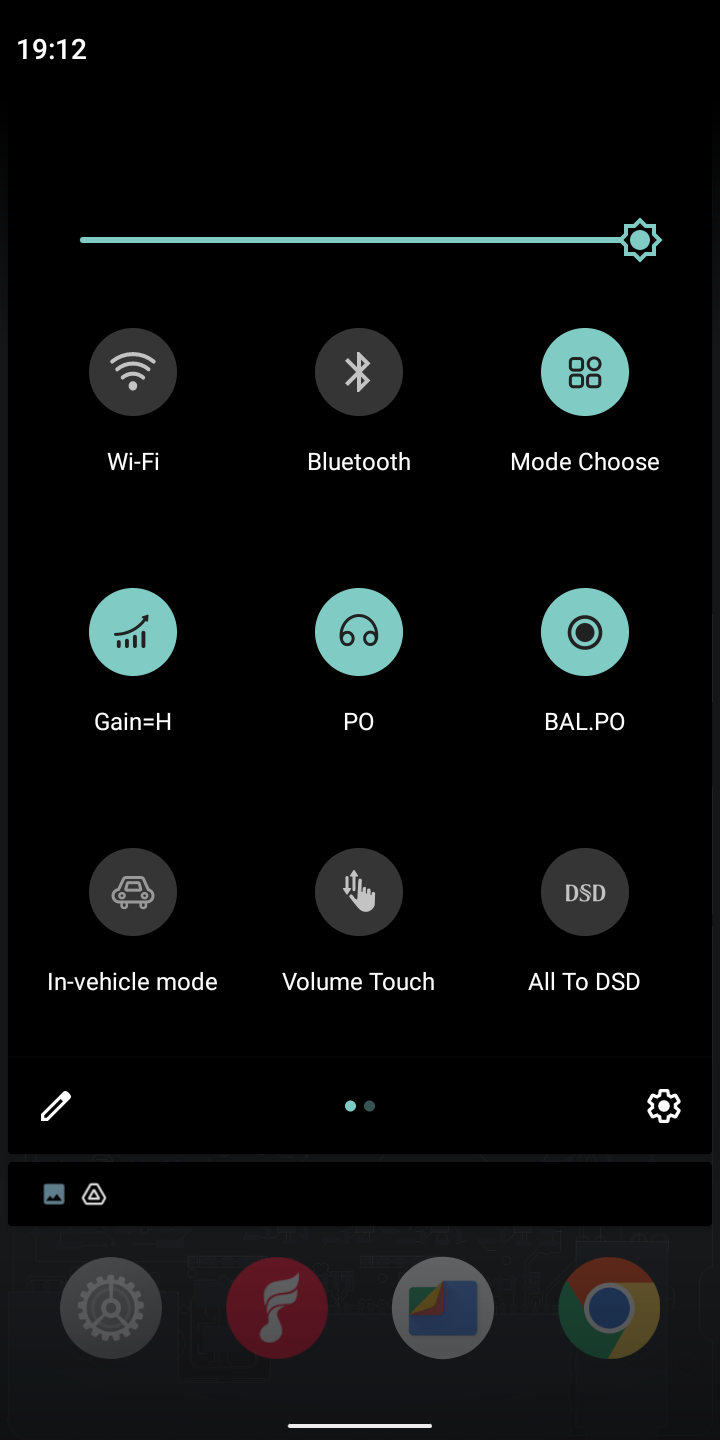
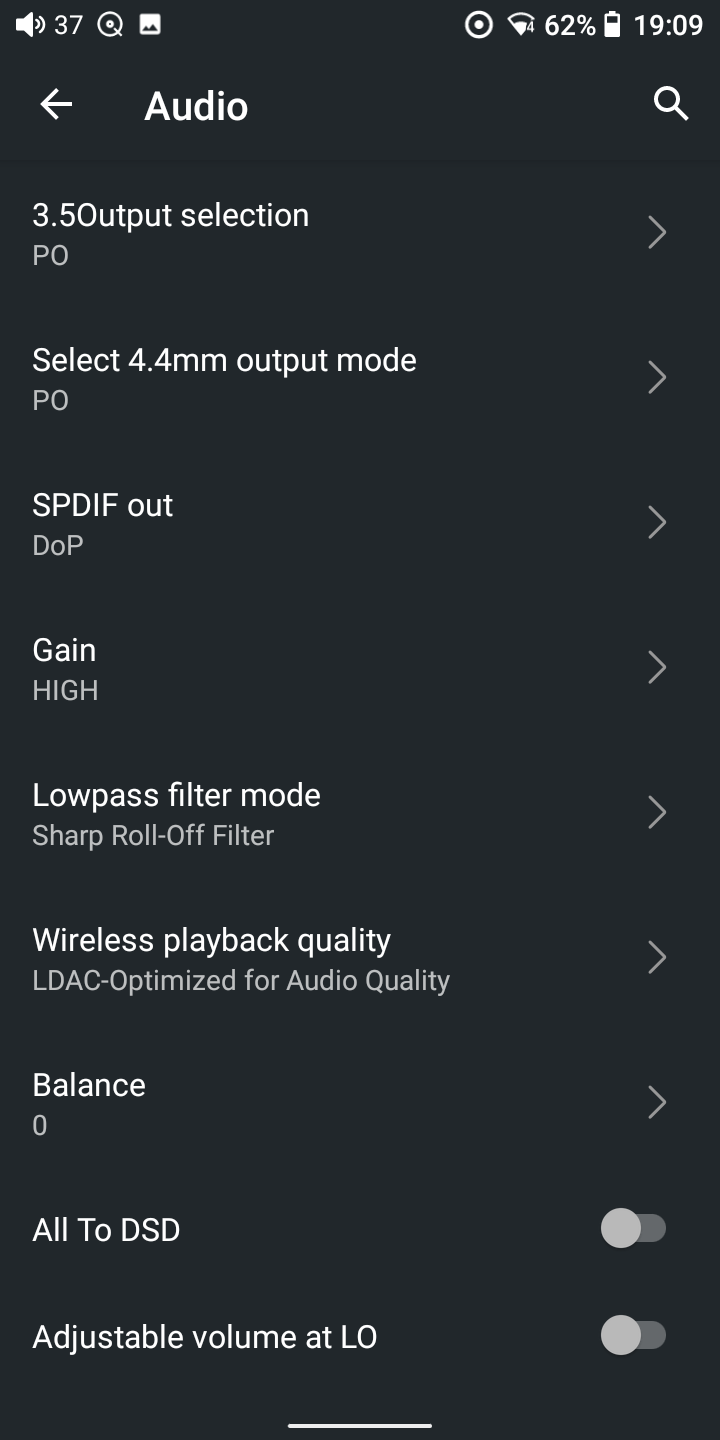
While the 3.5mm jack has a recommended max impedance of 150 ohms, with the gain on high and volume somewhere between 80 and 120, I’d call the listening experience with my 250 ohm Beyerdynamic DT770 Pros enjoyable. While some people might enjoy a warmer sound, I like the clean neutral tones the DAC and amp produce. The soundstage is impressively wide, making it very easy to hear individual instruments and very subtle reverb in a song. Stepping up from even nice Bluetooth earbuds to a DAP like this one is almost like going from listening to a performance in a garage to one in a concert hall. In addition to a higher impedance rating on the balanced jacks (due to using one DAC and amp per audio channel instead of just one set for both) fully balanced jacks typically will have less distortion from crosstalk between the left and right channels. Balanced jacks aren’t a magic bullet for universally better audio, though.
The file support of the M11 is also impressive. A lot of people have heard about MQA, and are probably at least acquainted with popular lossless audio file types like WAV and FLAC. The M11 can handle them all, plus it has the hardware to play much more demanding DSD files. On the balanced outputs, it maxes out at 32bit 384kHz for FLACs and WAVs, supports full 8x MQA decoding, and DSD files up to DSD256. Out of the 3.5mm jack it still supports full MQA decoding, but FLAC and DSD support drop to 24bit 384kHz and DSD128, which is still higher quality than the vast majority of music releases will ever get. For comparison lossless CD-quality audio, which is the best you can manage if you’re on Bluetooth, maxes out at just 16bit 44.1kHz.
Software and performance
The M11 lets you use it in a few different ways, the main ones being Android and Pure music mode. Pure music mode is indistinguishable from FiiO’s own music app, and limits your playback just to locally saved music or tracks on a DLNA server. This is fine for anyone who has a large collection of hi-def tracks, but Android mode is a necessity if you depend on streaming apps. While you have access to the Play Store, FiiO also preloaded the M11 with its own app “store” (it’s just an APK repository) that has most streaming services placed front and center for maximum convenience.
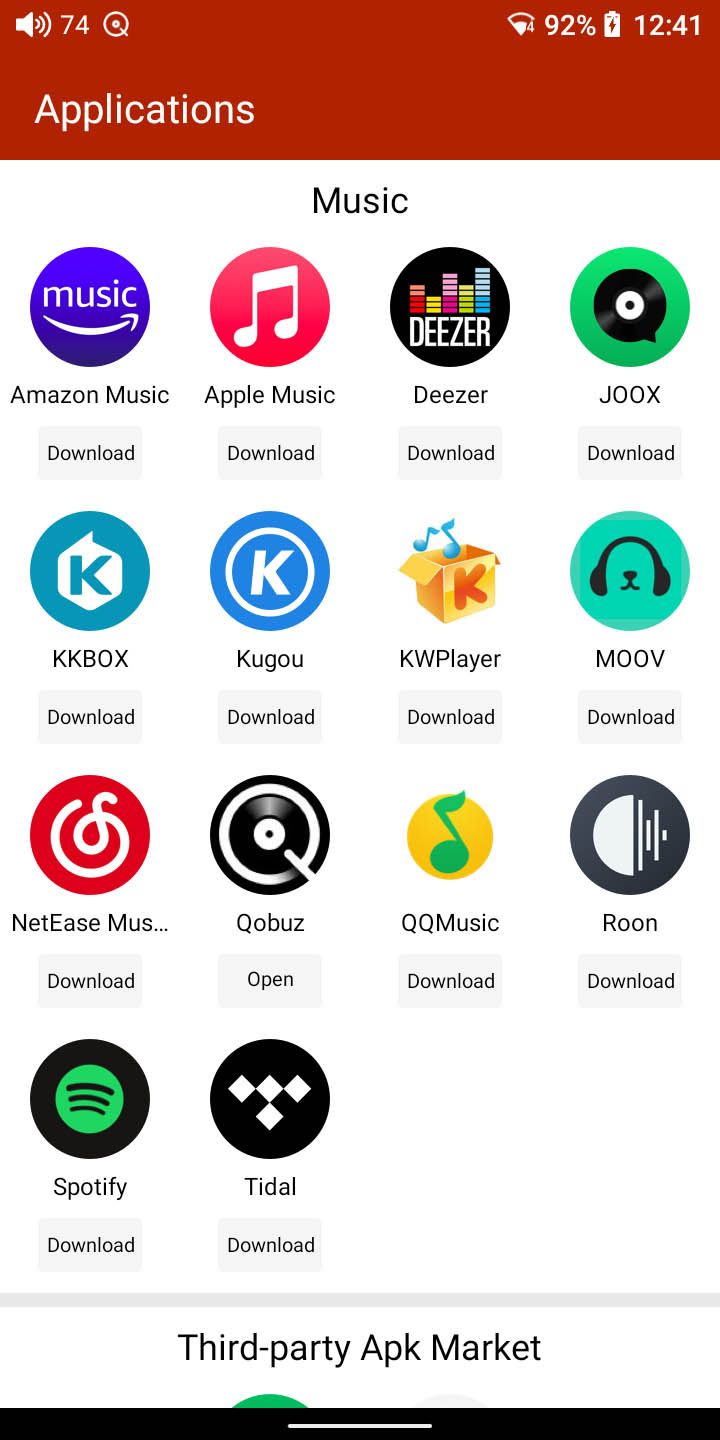

There are a few other "modes" for the M11 Plus, and while some are more useful than others, even the less useful modes are nice inclusions for dedicated audio nuts. Car mode allows you to plug the M11 into your car’s USB port to turn off and on with your car, which is useful for anyone who has good speakers but a bad Bluetooth receiver built into their vehicle. USB DAC mode lets you use the M11 as a makeshift desktop DAC for your computer—great for anyone who only wants to buy one audio solution for multiple use cases. There’s even an Airplay mode since Airplay2 has better audio quality than what Apple can manage over Bluetooth. Just like the much cheaper FiiO BTR5, it’s possible to use the M11 as a Bluetooth receiver with your high-quality cans for better audio quality than Bluetooth buds can manage. The use case for this is super narrow since the M11 can play anything your phone could—you’re probably better off just playing those files directly on the M11 and getting rid of the Bluetooth bottleneck in your audio quality.
I’ve already mentioned how much control over the listening experience you get with the M11, but that isn’t just limited to the audio. Hardware features like the hold switch can easily be customized to the extreme. Unlike a conventional hold switch, the M11 lets you decide what gets disabled while the hold is on. Want volume control but no skip buttons? Maybe you want "hold" to only turn off the volume control. This customizability doesn’t stop at the hold switch, either. There’s a custom button that can be set to do things like change modes or EQ settings, shuffle/skip tracks, or favorite the current track. If you’re not partial to the touchpad sliding volume control, that can be turned off, too.
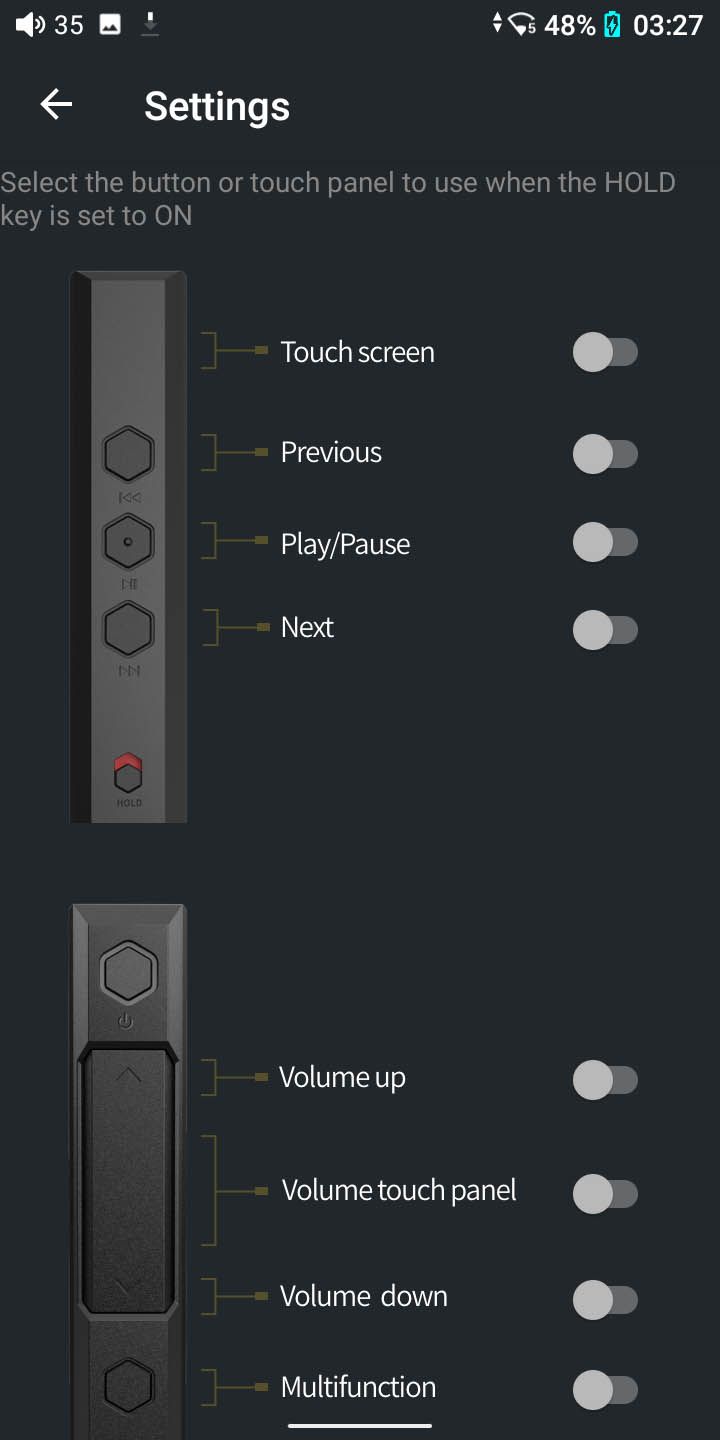
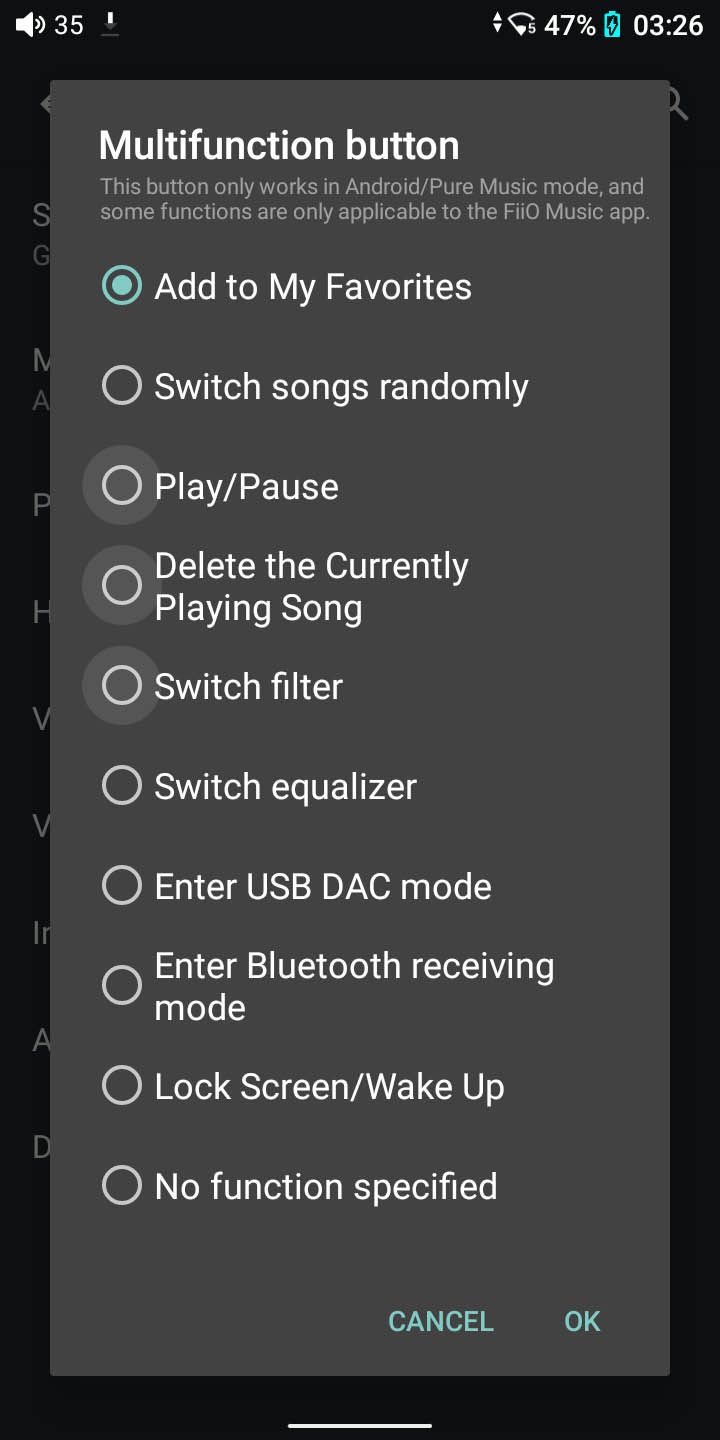
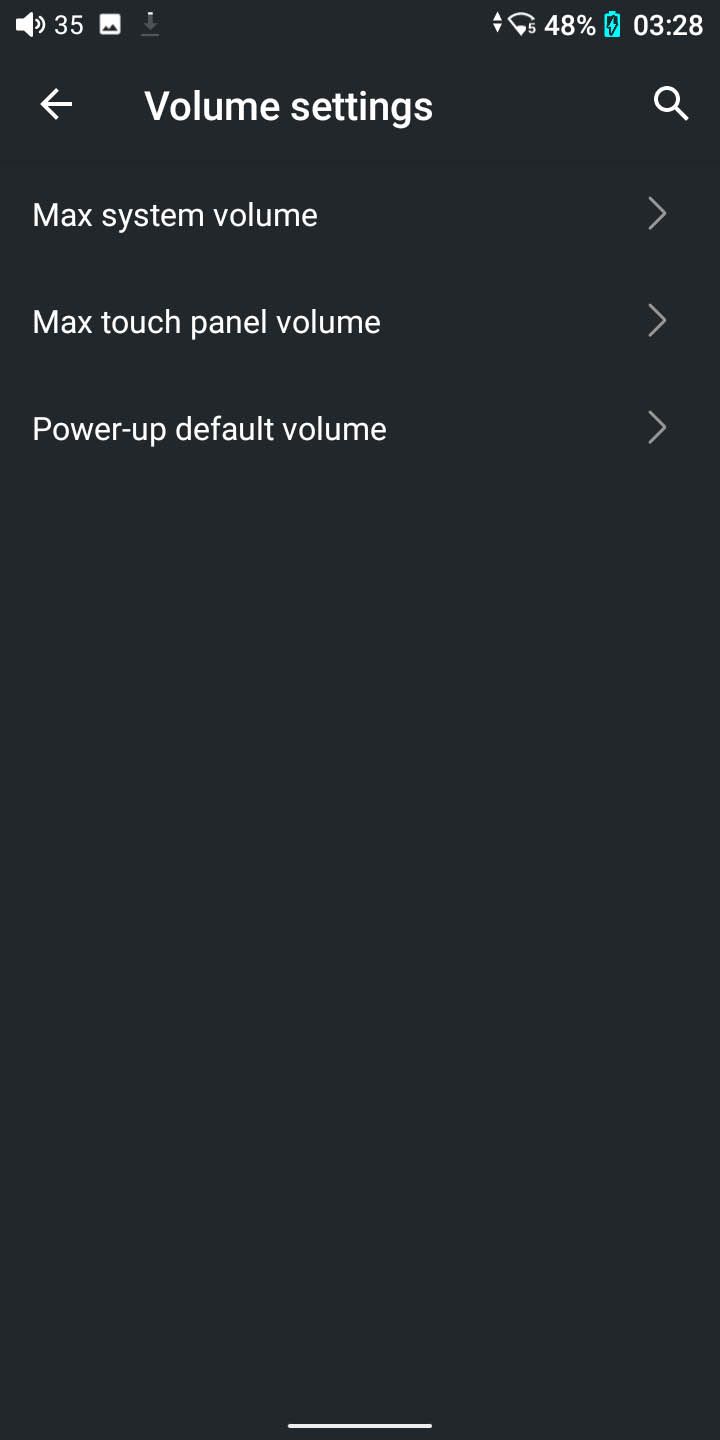
Battery life
With my lossless track list, battery life is consistently good, but higher quality playback like DSD will cut into your listening time. However, the biggest determining factors in battery life are the gain, which jack you’re using, and your headphone impedance. Thus, easy-to-drive cans on low gain out of the 3.5mm jack will earn you a few extra hours compared to higher ohm headphones out of the balanced jacks on high gain. The 6000mAh battery is more than enough to ensure about 10 hours of listening at worst and close to 14 at best.
The charging tops out at 27W over USB-PD, so while it’ll take a few hours to go from dead to fully charged because of that massive battery, it’s still fast enough to give you about an hour of listening time in just a few minutes.
Should you buy it?
Maybe, but only if you’re interested in diving head first into the audiophile realm. Most people don’t need or want a standalone music player, and if you aren’t sure that kind of device is for you, you can probably find a smartphone that's more than good enough on the sound quality front.
Still, you’d be hard-pressed to find a better standalone music player for the money than the M11 Plus. This thing is chock-full of audiophile considerations that not everyone will appreciate, but you might grow to love. The music the M11 can put out is comparable to a decent desktop setup, but it doesn’t cost much more and fits in your pocket. Its Achilles heel is the miserably low internal storage, but that’s easy enough to fix with a decent MicroSD card.
Buy it if…
- You want a pocket-sized music player with desktop-quality audio
- You want a mid-range DAP that has lots of flagship features without the four-figure price tag.
Don’t buy it if…
- You want a true flagship DAP
- You want to dip your toes into audiophile gear for as cheap as possible
FAQ
Q: How does the FiiO M11 Plus compare to the Sony NW-ZX507/S?
While both players only have 64GB of internal storage, and sleek metal frames, FiiO manages to outspec Sony in virtually every other way for $130 less. With android 9 as opposed to 10, and a 3.6" display compared to the M11's 5.5", Sony isn't afraid to cut costs on the less important features, but while they both support hi-res files, the maximum supported bitrates of the M11 are higher. Sony does make the DAC and amp chips of the NW-ZX507/S in house instead of buying from the manufacturers other DAP manufacturers do, so it's hard to make an apples to apples comparison of the chips that really matter here. Sony also lacks the 2.5mm balanced jack supported by the M11, but manages to have a longer battery life while remaining about 3mm thinner.
Q: How does the FiiO M11 Plus compare to the Astell&Kern A&norma SR25
The file support, storage, and price points of these two devices are exactly identical. What's far from identical is the styling of these two players, since Astell&Kern are known for distinct design work. What it may have in uniqueness, it lacks in flexibility, though. The A&norma SR25 is more android based than you may be used to, and any streaming apps need to be sideloaded onto it through a computer instead of through a play store, and the list of supported apps is only about 20. It also only has a little over 3000 mAh of battery capacity compared to the 6000 of the M11.

.jpg)
.jpg)
.jpg)
.jpg)
.jpg)
.jpg)
.jpg)
.jpg)